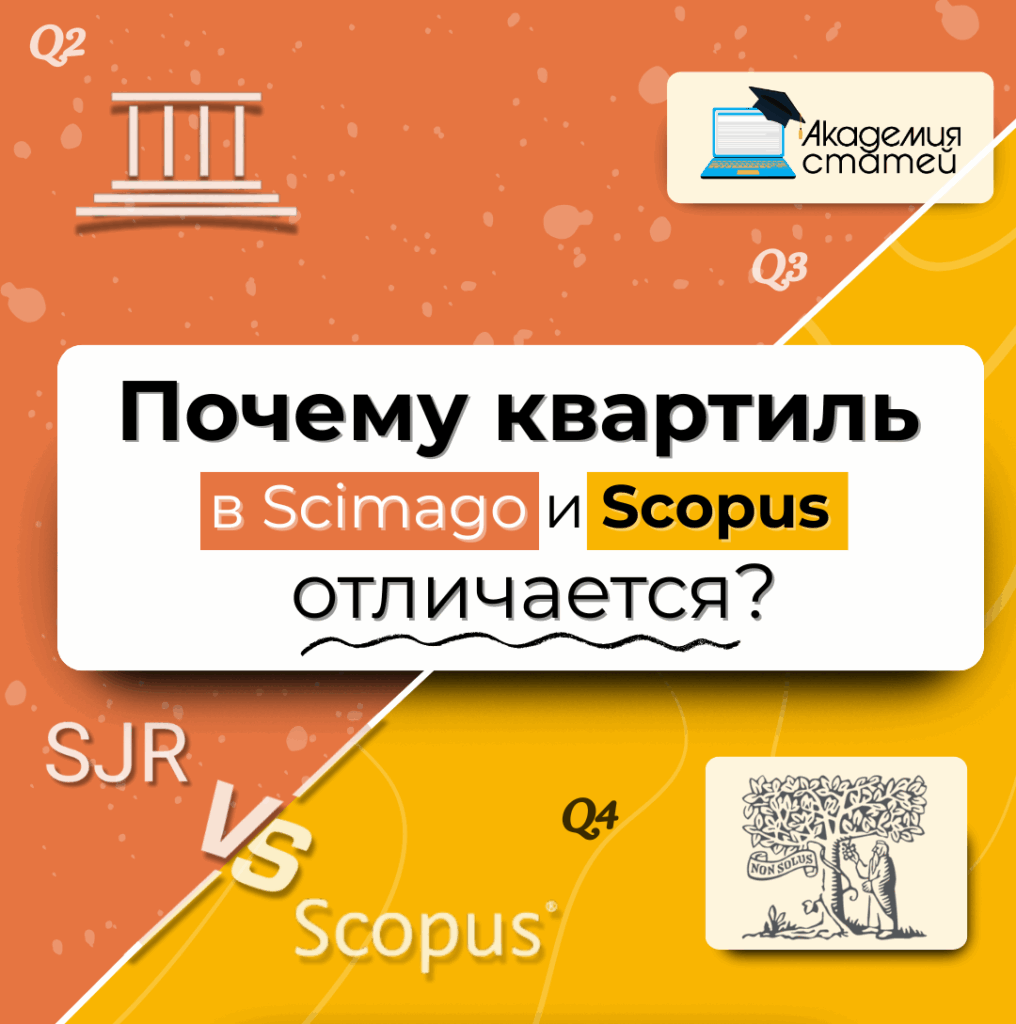Online search platforms like Scopus are designed to build a research database and include a long list of publications. Each scientific journal targets a specific audience, which is not uniform within the scientific community and has its own unique significance. Researchers, readers, and, on the internet, content consumers are interested in a specific field of knowledge and focus on resources that best meet their expectations.
Research articles, classified at various levels and research areas, are not only categorized by subject area and article source (i.e., scientific journal), but are also indexed based on cross-citation factors (impact factor). A journal is classified into one or more of four groups in the Web of Science (WoS) and Scopus databases.
This group, as a separate category, is called a quartile. It's an important tool for ranking articles. Publications are categorized primarily by quality. The goal is to help researchers and readers find material relevant to their interests, and to motivate authors to grow professionally. How does a quartile work, and what is its essence?
What is a log quartile?
A quartile is an accepted category assigned to a scientific journal when ranked by the scientometric databases WoS and Scopus. A quartile is denoted by Q, and the following database metric is used for its gradation:
- in WoS this is the JCR (Journal Citation Reports) impact factor, which indexes 12.5 thousand journals;
- SJR (SCIMago Journal Rank) in Scopus indexes 21,000 journals.
All article platforms included in both databases are divided into four groups. Each scientific journal is assigned to one of the quartiles, from Q1 to Q4. The first group includes the most respected and recognized journals in the scientific community, while the last group includes those with the lowest level of expertise and virtually no authority. WoS and Scopus have identical values and are subject to the same algorithm.
The level system is universal for all areas of scientific research and specializations. Using this tool, scientists can objectively evaluate the quality of a scientific journal.
What is the significance of quartile for a scientist?
A Scopus quartile for a scientist is an indicator that a scientific journal has in its databases. Its value influences its ranking, and the impact factor is a categorization of the author's and reader's perceptions. This provides scientists with an effective tool for selecting a platform for publishing their materials, while users quickly find the content they need—and, most importantly, high-quality content. The Scopus ranking is responsible for this latter aspect.
But there's a catch: a scientific journal doesn't acquire Q status for life. Publications periodically migrate from one quartile to another, and this movement is due to citation recalculations and changes in other levels. Therefore, in different years, a journal may change its ranking, belong to different groups, or even disappear from the list of peer-reviewed journals. And it won't be found in Scopus.
How to determine a quartile: the Scopus algorithm
A scholar-author or reader can find out which quartile a journal is assigned in the Scopus system by following this link: https://www.scopus.com/sources.uri (directly to the Scopus database resource). There you should find the journal title or ISSN.
The page that opens will display the journal's category, its importance in the specialized research community, its national and publishing affiliation, and other information. It will also include links to the website, indexes, including the h-index, and an impact factor. Next, select SiteScore.
Scopus provides a detailed categorical analysis of a journal's dynamics and its quartile. The analysis in Scopus is accompanied by calculation examples and a display of rankings. Citation impact assessment in Scopus is very detailed. As a result, researchers and other users receive information about a journal's quartile with a full justification.
Scopus quartile calculation is performed automatically. The percentage of citations across groups is distributed as follows:
Q1 – 75-100%
Q2 – 50-75%
Q3 – 25-50%
Q4 – 0-25%
A publication can simultaneously appear in different quartiles due to different citation impact scores across multiple profiles. Therefore, the same scholar may submit articles to a publication multiple times, for example, as co-authors, and these articles will have different weightings.
The Scopus quartile is an established system recognized as effective internationally. A scholar who publishes regularly must be aware of changes in publication levels. The system is actively used and, thanks to regular updates, remains relevant. Universities, scientific laboratories, and research institutes require their staff to publish in journals that rank well in scientometric databases. This enhances the organization's ranking and the authority of their staff's articles.
Today, scientists must navigate the dense information flow that accompanies scientific articles. To ensure the presentation of research materials to the scientific community with guaranteed quality results, the Academy of Articles provides services for preparing and publishing Web of Science articles. Selecting a high-quality platform and determining the impact factor, Full-scale processing of materials, writing articles according to specified criteria, the required quartile, journal rating, and other indicators – the package of services includes all necessary information support and high results.





